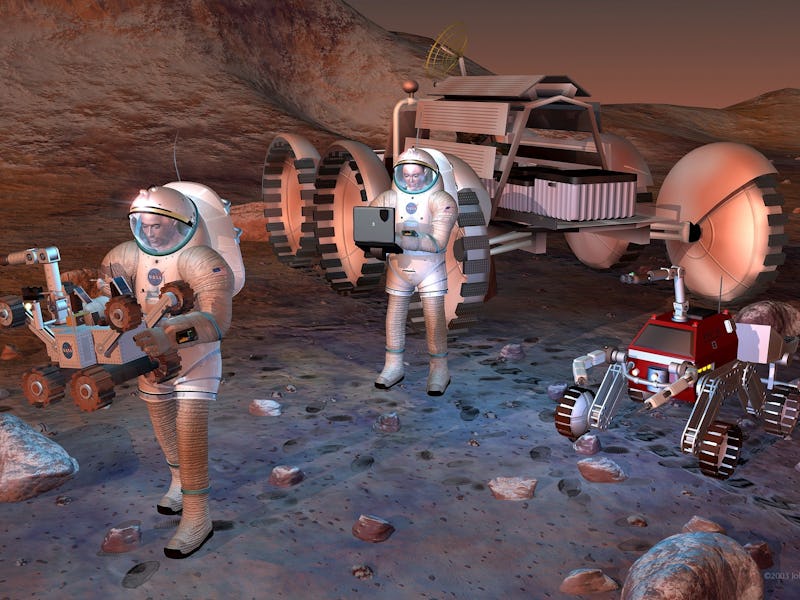NASA Megarocket is Eating Money, Leaving Little for Mars Landing
Blasting off to Mars is hugely expensive, but so will be landing there – and returning.

After settling down in the dusty Martian world, a group of NASA astronauts might one day open the hatch on their spaceship and step out into the red, frozen desert. But NASA can’t say when this might be. The agency doesn’t have enough money to start building its Martian landing vehicle, which will also blast astronauts off of Mars.
At an American Institute for Aeronautics and Astronautics meeting on Wednesday, NASA’s chief of human spaceflight acknowledged that its new mega-rocket, the Space Launch System, has been so expensive to design, test, and build, that the space agency has no cash left for the other essential components of a successful human mission to Mars.
“I can’t put a date on humans on Mars, and the reason really is the other piece is, at the budget levels we described, this roughly two percent increase, we don’t have the surface systems available for Mars,” said NASA’s William Gerstenmaier at the meeting. “And that entry, descent and landing is a huge challenge for us for Mars.”
The next generation of NASA's Space Launch System will be 364 feet tall in the crew configuration, will deliver a 105-metric-ton (115-ton) lift capacity and feature a powerful exploration upper stage.
A two percent increase, to account for inflation, simply won’t supply NASA with enough funding to build its other essential mission vehicles. The Apollo missions to the moon, for instance, required that astronauts rendezvous with the Apollo Lunar Module, which carried astronauts from the moon’s orbit down to the moon, and then back to their Earth-bound spacecraft.
NASA will apparently have little trouble getting to Mars and landing back in Earth’s oceans. It’s the middle mission necessities that are lacking. The Space Launch System and its Orion crew capsule are presently under intensive development. The rocket’s engines have been blasting massive columns of smoke and fire in the Utah desert, and the Orion capsule has been repeatedly dropped into a large pool, in preparation its ultimate landing in Earth’s ocean.
The Space Launch System engine being tested in the Utah desert.
The precise cost per SLS launch is unknown, but NASA estimates that if it flies one deep space mission per year, the annual costs of the SLS system will come out to around $2 billion, which is not surprising. Standing at 364 feet (which is nearly 60 feet taller than the Statue of Liberty), the rocket will produce 8.8 million pounds of thrust — the most ever — and carry up 90,000 pounds of survival gear to Mars. This rocket, however, is expendable and will be discarded after each use, unlike the SpaceX Falcon 9 (and soon to come Falcon Heavy), which attempt to dramatically reduce production costs through their reusability.
Additionally, this $2 billion price tag includes production labor, testing, the Orion recovery, and paying scientific and engineering personnel for in-mission operations.
Additionally, sending humans to Mars will require multiple launches, not simply the one shot to send them millions of miles into deep space. For instance, NASA will need to first send a landing vehicle into Martian orbit, and perhaps supplies there beforehand.
Congress allotted NASA’s “exploration systems development” $3.7 billion in 2016, which is being consumed by SLS development. The rocket has yet to undertake a test flight, but the first test, which will have no crew, is slated for 2019.
For now, the 2030s are the decade being tossed around for a crewed mission to Mars. But until NASA sees more funding, there is no real timeline for getting NASA astronauts Mars. Which begs the question, will private space flight companies with their reusable rockets get there first?